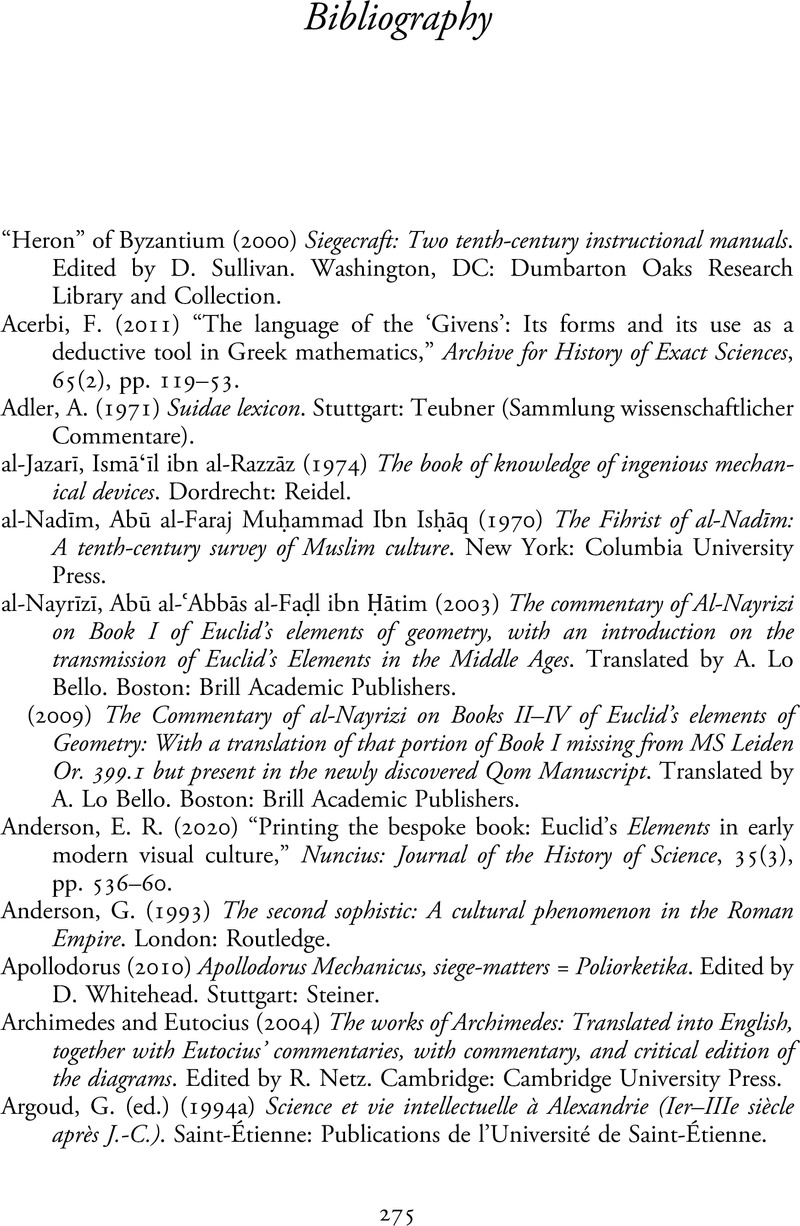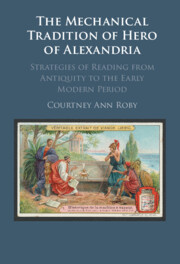Book contents
- The Mechanical Tradition of Hero of Alexandria
- The Mechanical Tradition of Hero of Alexandria
- Copyright page
- Contents
- Figures
- Acknowledgments
- Chapter 1 Introduction
- Chapter 2 Systems of Explanation
- Chapter 3 Theorizing the World
- Chapter 4 Hero in Context
- Chapter 5 Hero in the Age of Print
- Bibliography
- Index
- References
Bibliography
Published online by Cambridge University Press: 06 July 2023
- The Mechanical Tradition of Hero of Alexandria
- The Mechanical Tradition of Hero of Alexandria
- Copyright page
- Contents
- Figures
- Acknowledgments
- Chapter 1 Introduction
- Chapter 2 Systems of Explanation
- Chapter 3 Theorizing the World
- Chapter 4 Hero in Context
- Chapter 5 Hero in the Age of Print
- Bibliography
- Index
- References
Summary

- Type
- Chapter
- Information
- The Mechanical Tradition of Hero of Alexandria , pp. 275 - 295Publisher: Cambridge University PressPrint publication year: 2023



